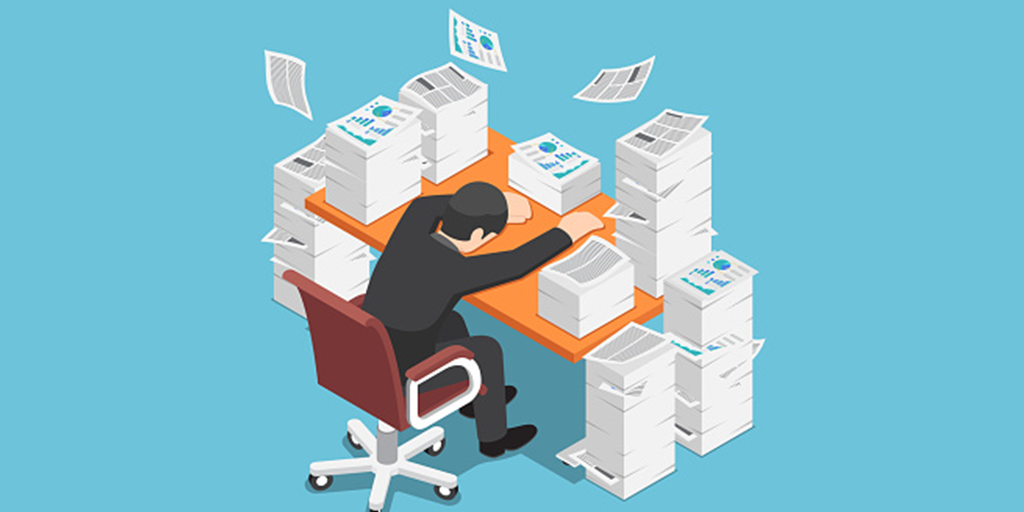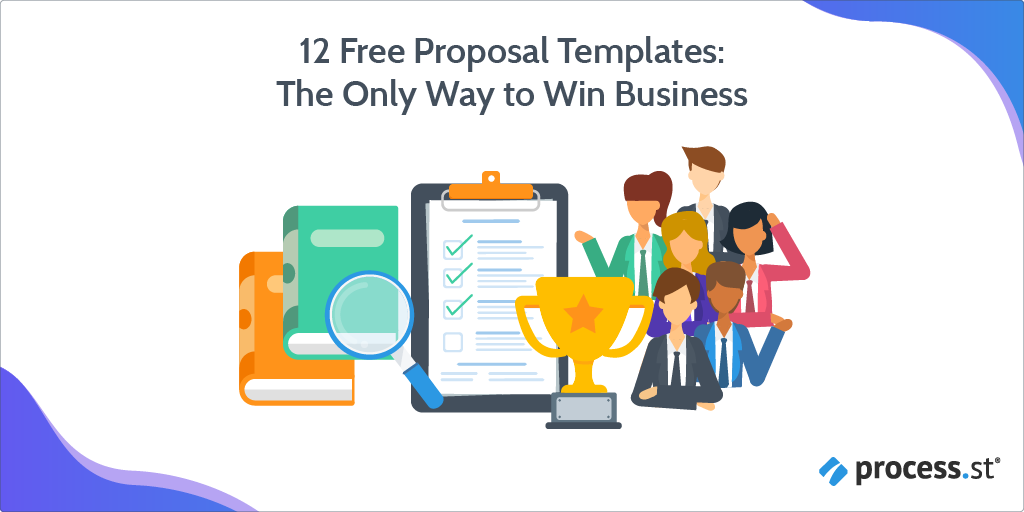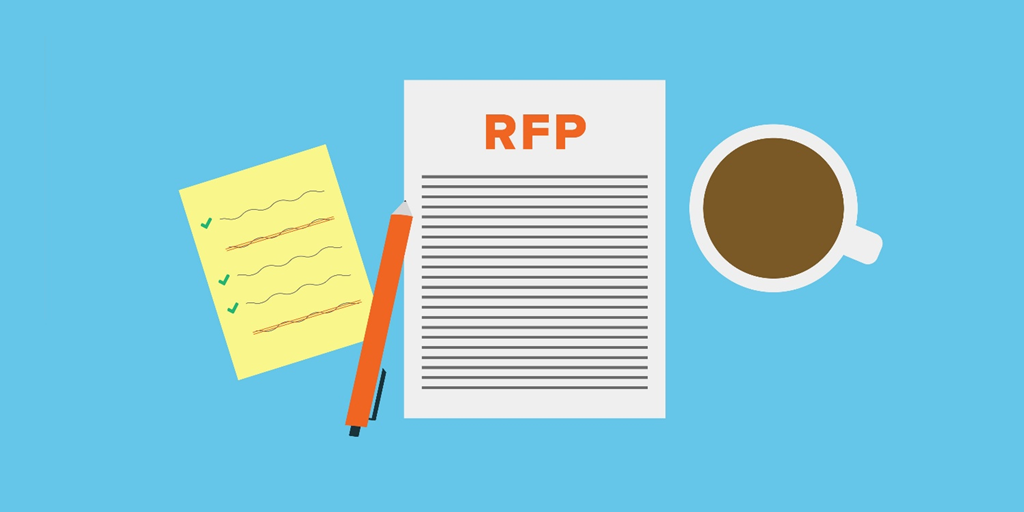How many proposals do you submit, on average, per month?
Five? Ten? Fifteen? …More?
And out of those, how many do you win?
Zero?… One?… Maybe two if you’re lucky?
“The U.S. Department of Transportation’s TIGER grant program accepted less than 10% of eligible grant applications” – CDN2, Four Types of Grant Funding
Hearing “No” after “No” after “No” is devastating, disheartening and downright depressing.
Where are you going wrong? How can you improve? What in God’s name do you need to do to get a YES?!
If you’re looking for ways to create a blinding proposal that will flatten your competitors, dazzle your prospective buyers, and result in a long-awaited YES from a panel of reviewers, you’ve come to the right place.
All you need is ten minutes and the following 12 free proposal templates:
If you don’t have ten minutes, feel free to dive straight into these winning proposal templates:
- Bid Proposal Template Checklist
- Business Proposal Template Checklist
- Construction Proposal Template Checklist
- Consulting Proposal Template Checklist
- Contractor Proposal Template Checklist
- Event Proposal Template Checklist
- How to Write a Grant Checklist
- Marketing Proposal Template Checklist
- Project Proposal Template Checklist
- Research Proposal Example Checklist
- Sponsorship Proposal Template Checklist
- Website Proposal Template Checklist
Or, if you’re curious, take a sneaky peek at the website proposal template to give you a taste of what’s to come!
These are the topics we will cover in this post:
- What you need to achieve with a proposal
- 8 ways to create the perfect proposal
- The 12 different types of proposal
- The real secret behind a successful proposal
- How to use Process Street to write your winning proposals
Ok, let’s go!
What you need to achieve with a proposal
Before we get into the nitty-gritty of how to create a winning proposal, let’s quickly define what a proposal is, so we truly understand what we’re trying to achieve when we’re creating a proposal.
“A proposal is an act of putting forward or stating something for consideration” – Merriam-Webster
A proposal is a suggested plan or idea, that needs to convince the reader that they should make the choice you are proposing.
Because you’re asking someone to choose you over your biggest competitors, proposals often need to take on multiple roles. They need to be a combination of a sales pitch, a marketing strategy, a company brochure, and sometimes even a technical specification, all rolled into one concise document.
But, in simple terms, a proposal’s main job is to prove that you understand what your potential client’s problem is, and convince them that you’re the only one that can fix it for them.
The best way to do that is to write a cracking proposal. How do you do that? Let’s find out…
8 ways to create the perfect proposal
Before we go into detail about how to write the ultimate knock-your-socks-off proposal, we first need to understand the mindset of the person who will be reviewing it.
“Does it go on the “keeper” pile or does it go on the “discard” pile?”
That’s the first question your prospective client is likely to ask when they receive your proposal.
Why? Because your reviewer is probably staring at a pile of submissions larger than they can reasonably handle.

As an example, in one year alone, the EPSRC (Engineering & Physical Sciences Research Council) considered a whopping 2,589 research grant proposals. That’s roughly 10 proposals a day. Considering proposals can be anything from 10 to 50 pages long, it’s no wonder they are ruthless in their efforts to separate the wheat from the chaff.
So, how do you make sure your proposal lands in the keeper pile and swerves the discard pile?
Whether you’re capable is not the issue. It’s whether you outscore your competitors in your proposal.
The following eight tips will put you in the keeper pile and keep you out of the discard pile.
Perfect proposal tip #1. Stick like glue to the Request For Proposal (RFP)
See the Request for Proposal (RFP), not as a bottomless pit of never-ending requirements, but as a direct path to success.
Your proposal reviewer will expect you to meet the deadline specified in the RFP. They will expect you to meet each and every requirement stated in the RFP. They will expect you to write, structure and style your proposal according to the conditions specified in the RFP.
Don’t make it difficult for them to score you against the RFP by using different wording or a different structure. Make sure all RFP requirements are met, that it’s the exact length they’ve asked for, that you’ve included all required documentation, and that you’ve met the deadline they’ve given.
It’s simple. Follow their instructions and make it as easy as possible for them to review against the RFP. If you receive any advice that contradicts the expectations of the RFP (including this post), ignore it.
Perfect proposal tip #2. Research your potential client
Before you start writing your proposal, it’s crucial that you take the time to learn about your potential client and truly understand who you’re writing the proposal for.
Reviewing their LinkedIn profile, their website, their company financial records, their work history, their competition, their latest post on Instagram (well…that might be a step too far…) will help inform what key elements to include in your proposal and will allow you to craft a proposal that’s personal, accurate, effective and more likely to be accepted.
Perfect proposal tip #3. Have a clear structure
“Every element of every proposal should be structured and tailored to maximize its persuasive impact” – Richard Nordquist, What Is Proposal Wriitng?
Building a proposal is like building a house. Components can vary but the foundations will always be the same.
A house will always need a roof, walls, windows, and doors. A proposal will always need information about your company, a demonstrated understanding of the problem, pricing options and a solid solution. So make sure your proposal has a clear structure that is based around these key components. Make it as easy as possible for the reviewer to follow.
Perfect proposal tip #4. Dare to be different
Ok, this is where you might feel I’m being a little contradictory. Stick with me though.
Study the RFP, stick to it like glue, BUT be aware! Doing the bare minimum will not make you the customer’s best alternative.
If the customer picks you, it will not be because you were compliant with the RFP.
If the customer picks you it will be because in addition to RFP compliance you offered more.
Think about the benefits you can offer that client. And I mean think. Everyone will offer benefits. Probably the same ones. What benefits are you offering that no one else is? Solid differentiators will help you stand out from the crowd.
Perfect proposal tip #5. Focus on them, not you
“Mirroring” is the way to build rapport with people and help them feel as if you truly understand them. Keep this in mind when pitching a company your services” – PandaDoc, Understanding the Basics of a Business Proposal
You probably hate people who only talk about themselves. So, why would you be that person?
People these days don’t have the time or the interest to read ten pages about you. Write about them. What do they need from you? Why do they need it? How can they benefit from your resources, experience, and approach? Write your proposal as though you are speaking to them directly. If you’ve followed tip #2 and have researched your potential client, this should be easy to do.
“Every potential client has their own unique personality and voice, so a good proposal will mirror that” – PandaDoc, Understanding the Basics of a Business Proposal
Perfect proposal tip #6. Keep it concise
“Just say what you have to say. Don’t redundantly say what you are going say, say it, and then say what you told them” – Carl Dickson, PropLibrary
To briefly reiterate my earlier point, imagine having to review 10 proposals, each 30+ pages long, by the end of the day. If 15 of those pages are filled with fluff and waffle, you’re going to lose interest. Quickly.
Get straight to the point. Don’t deviate. Don’t take the scenic route and don’t beat around the bush.
I love this quote by RMR Consulting, it sums it up perfectly:
“Think of your proposal as the first step to solving your client’s problems. Time is a resource, and if you’re wasting theirs with your portfolio novel, you’ve just created a new problem for them”
Perfect proposal tip #7. Use clear, simple and direct language
Sentences that are written in the passive voice sound weak and less important.
Take this as an example; out of the two sentences below, which sounds stronger and more compelling to you?
a) “Our firm designed this” or,
b) “This was designed by our firm”
And no matter how intelligent you think complex words and challenging sentence structures make you seem, they only serve to diminish the intensity of the communication. They frustrate the reader and lead them into grammatical bottlenecks that break their fickle concentration.
Perfect proposal tip #8. Read it. Read it again. Read it one final time. Then read it again.
This final tip is the most important one.
“There is absolutely nothing worse than opening up a proposal to see a spelling error in a section heading or a pull quote” – RMR Consulting, 5 Things to Learn from Bad Proposals
We’ve ALL done it. Desing. Biuld. Thnaks. We’ve all sent an email, message or document with spelling errors that we are completely blind to.
Those tiny spelling mistakes, missing full stops, rogue capital letters, and misplaced commas that we’re completely oblivious to, will be glaringly obvious to your prospective client. Trust me.
Read it. Read it again. Read it a final time. And then read it again.
“A great proposal can make a world of difference in closing a wobbly deal, while a poorly written proposal will lose even a rock-solid client” – Smart Insights, 8 Essential Components of a Marketing Business Proposal
So, now we’ve covered the ways to create a perfect proposal, let’s move on to talk about the different types of proposals you can create.
The 12 different types of proposal
Although the RFP is likely to dictate the exact content and structure of a proposal, as we’ve discussed, some features will always be needed in a proposal. Certain features will always be needed for certain types of proposals too.
Let’s look at 12 different types of proposals and see what each of them tend to include.
Business proposals
“Every business was created to solve problems. Every problem-solving endeavor begins with a good “pitch” or proposal” – PandaDoc, Understanding the Basics of a Business Proposal
A business proposal is basically a sales pitch on paper. It outlines your value proposition, and its primary purpose is to persuade a company or an organization to do business with you.
Business proposals tend to fall into one of two categories:
- Solicited. Solicited proposals are requested by a prospective client, usually via an RFP.
- Unsolicited. Unsolicited proposals are proposals that are sent out to prospective clients in the hope that you will win new business.
Regardless of whether it’s a solicited or unsolicited proposal, it should describe what you can do to solve the problem, how you plan to solve the problem and the finer details about when, why and how much it will cost to solve the problem. It should also contain a key call to action that will compel the recipient to take the next step.
Research proposals
A research proposal is a concise and coherent summary of your proposed research. Think of it as an introduction to your intended research. Like a prologue to an upcoming novel.
The main objective should be to convince others that you have a worthwhile research project and that you have the competence and the work-plan to complete it.
It should always clearly state the central issue or question that you intend to address through your research and outline the general area of research. It should contain a brief review of available literature, knowledge sources and debates on the topic to demonstrate the originality of the proposed research.
A solid research proposal should also contain the objectives of the research, a detailed methodology, the funding requirements, and all possible research outcomes.
Project proposals

“There is one concrete rule to writing a great project proposal: keep it simple” – Priority Matrix, Project Proposal Template
A project proposal outlines your project’s core value proposition. It’s the initial framework for establishing the concept of the project and includes what you want to accomplish and how you plan to accomplish it.
The two main objectives of a project proposal are:
- To get stakeholder’s approval for a new project, program, or service
- To get everyone on the team thinking about the same goals and priorities. It sets the roadmap for the project so that everyone is working towards the same goals.
Getting inside the heads of the people you are writing the proposal for is vital: you need to think like the project’s stakeholders to deliver a proposal that meets their needs.
Grants
Grant writing involves crafting a proposal to receive funding for a business or cause.
A grant needs to be divided into predictable sections that provide answers to these questions:
- What’s the purpose or goal of your project?
- What is the need you’re addressing, or the problem you’re solving?
- What are the expected outcomes of your project, and how will you achieve them?
- How will you assess or verify the success of your project?
- Why is your project important?
- What are the costs?
Check out this article to learn more about grant writing.
Marketing proposals
“A lousy marketing proposal is worse than no proposal at all” – PandaDoc, How to Write a Marketing Proposal and Win New Business
A marketing proposal, in simple terms, is a tool used by marketers to sell an idea or project to a client. But, as the world of marketing is cut-throat and competitive, landing the best clients, the biggest names, and the best pay often means writing the best marketing proposals.
The proposal needs to include detailed strategy ideas, delivery time frames, and estimated costs. But more importantly, it needs to WOW the client.
Capture and hold their interest by only including information that’s relevant. Acknowledge the client’s needs and make sure everything you write answers the fundamental question, which is on every client’s mind, “What’s in it for me?’
Consulting proposals
A consulting proposal outlines the working relationship between the consultant and the client so that both parties can stay aligned and understand the other’s expectations. It’s a document sent from a consultant to a prospective client describing a job they wish to take on and the conditions under which they will do so.
A consulting proposal is usually written after the consultant and prospective client have discussed the job at length.
Quality matters more than quantity, so keep it short. The average consultant proposal is only two pages long. Don’t give them the chance to get bored and look at someone else’s proposal.
Event proposals
An event proposal is a document that outlines the services you will provide for an event. It’s your chance to show off what you can do and what you have previously done.
As most people prefer to engage with visuals than to read text, especially with event proposals, you need to paint a show-stopping picture of what you can offer, what you can do, and what you have previously done. Include photos, 3D mock-ups or videos of your facility, guestrooms, menu options, and past events that showcase your space as well as what you can do with it.
The more detailed your event proposal is, the better the potential client will understand your capabilities and the unique guest experience you’re able to offer.
Construction proposals
If a construction project is to run smoothly, it needs to start with a solid construction proposal. A construction proposal provides details about what you’re proposing to do and includes specific information about materials, payment schedules, and costs.
It’s basically a written offer, sent to the construction project owner, that states that the construction worker will take on the work and furnish all labor, materials, equipment and/or services, for the prices and terms quoted in the proposal.
The biggest tip to remember with these proposals is to be as specific as you can about the scope of work. The more detail you can include, the better. Otherwise, you may find yourself having to answer those awkward “I assumed you were also going to do X, Y and Z?” or even worse “I thought that was included?” questions.
Sponsorship proposals
A sponsorship is a commercial relationship that benefits all parties of the equation.
A sponsorship proposal is, in effect, a pitch. It’s a document that’s used to persuade the sponsor that it would be beneficial to invest in a partnership/project.
For example, if a local football club needed financial support, they might send a sponsorship proposal to a local company. Within this proposal they might agree to wear heavily branded shirts, to raise the profile of the company, in exchange for financial investment. This creates a win-win situation for both parties.
Because a sponsorship proposal needs to convince a potential investor that it’s in their best interest to invest, they need to be persuasive, effective and targeted to win the sponsorship money.
Website proposals

A website proposal is basically a detailed outline for a website project. It should include the project objectives, the specific steps that will be undertaken, detailed timelines, and estimated budgets.
When they’re done right, website proposals can be incredibly powerful sales tools. They can turn clients that are only partially interested in your services into ones that are convinced that nobody else can match your ability to deliver on the job.
After reading a proposal, a potential client should know exactly what outcomes you intend to achieve, how you’re going to achieve them, and what it’s going to cost them.
Speaking from my own experience with website projects, website development rarely goes to plan. How features should work, what integrations are necessary, and what functionality is needed can be interpreted in many different ways, by you, the client and the developer.
So. Rule of thumb when writing a website proposal is: be as specific as possible.
It’s essential to thoroughly scope the project out, include heaps of detail, and be crystal clear about every piece of functionality, feature or integration that you are proposing to build or include.
Bid proposals
“A bid is not an info packet. It’s a persuasion tool” – Emphasis, Five Things to Remember when Writing your First Bid
Often used in government or large corporate projects, the goal of a bid proposal is to persuade someone to choose your company to complete a project or piece of work. It’s a specific summary of why you are qualified to undertake the job. With strict rules and regulations to adhere to, the bidding process is highly competitive, and companies will compete to win a bid by submitting bid proposals that focus on costs.
Having said that, writing an effective bid proposal should still be seen as an exercise in persuasive writing. You need to convince the recipient that, alongside the fantastic value for money and low costs you can offer, you tick every one of their boxes and are, by far, the best choice in all areas.
Contractor proposals
A contractor proposal is a written outline of the project that’s to be completed by the contractor. It’s usually written after the contractor has spoken with the client to assess their needs and expectations and established what time and resources will be needed to complete the project.
The goal for any contractor proposal is to introduce yourself, highlight your services, describe the costs, and convince the client that you are the right one to trust for the job.
So, now we’ve covered what you need to achieve with a proposal, how to create the perfect one and we’ve looked at some of the most common types, I think we can all agree that proposals are tough!
But the toughest part is probably the hours, days, weeks and months you spend researching, planning, writing and rewriting your proposal, only for it to be rejected because you spelled deisgn wrong. Now THAT is tough.
In this next section, I will share a secret with you that will make the writing and submitting of your proposals quicker and easier.
I’ll give you a clue. It starts with Process and ends in Street.
The real secret behind a successful proposal
Process Street is super-powered checklists. It’s state of the art Business Process Management (BPM) software that makes it easy to manage all your recurring tasks, processes, and workflows.
With Process Street, you can also connect to thousands of apps through Zapier, webhooks and API access to automate your workflows.
Want to see it for yourself? Watch this video:
Not only that, but we also have the following additional features that will create efficiencies, automate workflows and make processes within your business run smoothly:
- Stop tasks
- Dynamic due dates
- Task permissions
- Conditional logic
- Approval tasks
- Embed widget
- Role assignments
Talking of automated workflows, this webinar, hosted by our very own Blake Bailey, covers everything you need to know about automating your workflows. Give it a watch, it’s worth it!
Ok, so now you know who we are and what we do, let’s bring it back to how Process Street can help you write and submit winning proposals, whilst saving you time and effort.
As we’ve agreed, writing proposals is complicated, time-consuming, and stressful, to say the least.
You have a tonne of information to gather and a million points to remember to include. You’ve got to keep it concise, keep it direct, make sure it’s error-free, meet the deadline, make it different, compete with thousands, and, on top of all that, make sure you meet every single one of the endless RFP requirements.
Wouldn’t it be great to have a pre-designed template to follow that made sure you included all the required information, met the specified deadlines, incorporated your USP’s, spotted the silly mistakes, and addressed every single RFP requirement?
Well, your prayers have been answered.
How to use Process Street to write your winning proposals
We have created the following 12 proposal templates that will not only save you time, blood, sweat, and tears but will also allow you to create blinding proposals that win every time.
Bid Proposal Template Checklist
A bid proposal is a specific summary of why you are qualified to undertake the job. Use this checklist, alongside the bid proposal you are planning to submit, to convince the recipient that you are the best choice.
Click here to access the Bid Proposal Template Checklist!
Business Proposal Template Checklist
This business proposal template is basically a sales pitch on paper. Use this business proposal template alongside the RFP documentation to make sure you include all the required information and documentation.
Click here to access the Business Proposal Template Checklist!
Construction Proposal Template Checklist
A construction proposal provides specific details about what you are promising to deliver for a construction project. Use this checklist to ensure your proposal includes enough detail about the work you will carry out, the materials you will use, your expected payment schedules, and estimated costs.
Click here to access the Construction Proposal Template Checklist!
Consulting Proposal Template Checklist
Use this checklist to outline the working relationship between yourself and the client, so that both parties can stay aligned and understand the other’s expectations. Make sure you have plenty of contact with your prospective client throughout the process and include as much personalization as possible in your proposal.
Click here to access the Consulting Proposal Template Checklist!
Contractor Proposal Template Checklist
Use this checklist, alongside the proposal document you plan to submit, to introduce yourself, highlight your services, describe the costs, and convince the client that you are the right one for the job.
Click here to access the Contractor Proposal Template Checklist!
Event Proposal Template Checklist
Use this checklist to outline the services you will provide for an event so that your prospective client fully understands your capabilities and the unique guest experience you’re able to offer.
Click here to access the Event Proposal Template Checklist!
How to Write a Grant Checklist
This checklist should be used alongside the proposal document you are planning to submit to make sure that all elements have been considered, that the proposal contains everything it needs to and that it meets all stated requirements.
Click here to access the How to Write a Grant Checklist!
Marketing Proposal Template Checklist
To get the best clients, you need to write the best marketing proposals. Use this checklist to sell an idea or project to a client and wow them with your attention to detail, originality and thought processes.
Click here to access the Marketing Proposal Template Checklist!
Project Proposal Template Checklist
This checklist will help you to establish what you want to accomplish and how you plan to accomplish it so that your prospective clients have a clear understanding of what’s involved and why they should choose you.
Click here to access the Project Proposal Template Checklist!
Research Proposal Example Checklist
Use this checklist, alongside the proposal document you are planning to submit, to convince others that you have a worthwhile research project and that you have the competence and the work-plan to complete it.
Click here to access the Research Proposal Example Checklist!
Sponsorship Proposal Template Checklist
A sponsorship proposal needs to convince a potential investor that it’s in their best interest to invest. Use this checklist to make sure your proposal is persuasive, effective and targeted enough to win the sponsorship money.
Click here to access the Sponsorship Proposal Template Checklist!
Website Proposal Template Checklist
Use this checklist to turn clients that are only partially interested in your services into ones that are convinced nobody else can match your ability to deliver on the job.
Click here to access the Website Proposal Template Checklist!
And there you have it! 12 ready-to-use proposal templates that will save you time, help you meet all the necessary requirements and allow you to concentrate on crafting winning proposals.
Additional proposal-related process checklists
If you like what you see, take a look at these alternative proposal templates:
- Construction Proposal Template
- Construction Progress Report
- Continuation Project Proposal Template
- Renewal Project Proposal Template
- Supplemental Project Proposal Template
- Writing a Proposal: Step-by-Step Guide
- Social Media Engagement Campaign Proposal
- Budget Preparation Checklist
- Budget Template
- Budget Process
- Startup Due Diligence For A Venture Capitalist
- Environmental Accounting Internal Audit
- Cash Management Process
- Financial Plan Template
- Cash Flow Report
- Expense Management Process
- Cash Management Process
Proposal approval processes
As you can see, whether it’s approval from the CEO, the legal team, or your proof-reader, all proposals will need to go through some sort of approval loop. The Process Street approval feature streamlines the entire approval process and will save you heaps of time.
Watch this video to understand what you can do with the approvals feature and how it can make a massive difference to your approval processes:
We’ve covered a lot in this post, but if you’re stuck in a proposal writing rut and need further inspiration, check these related articles out!
Proposal template related articles and blogs
- How to Write a Proposal and Get What You Want
- 6 Types of Project Proposals That Get Approved (and How to Write Them)
- Project Proposal Template
- Five things to remember when writing your first bid
- Freelance Writing – Effective Tips For Writing a Bid Proposal
- Project Proposal Writing
- Proposal writing: Stages and Strategies with Examples
- Proposal Writing: The Six-Step Process
- Planning and Writing a Grant Proposal: The Basics
- How to Write a Grant Proposal
- How to Write a Winning Grant Proposal
- Grant Proposals (or give me the money!)
- Government Grants Statistics
- 4 Types of Grant Funding
- Top 3 Things to Know Before Applying for a Grant
- Grantseeking Basics
- Government Grants and Loans
- A Short Summary of Federal Grants
- What Is a Grant?
- Things to do Before Writing a Grant Proposal
- Understanding Government Grants
- 11 Things to Consider Before Applying for Government Funding
- 10 Checklist Tips for an Optimal Web Design Proposal Template
- 5-Step Guide to Get Your App Funded in 2019
Right, I think my ten minutes are up! Before I go though, let me leave you with this quote from the team at Smart Insights:
“Writing proposals manually simply makes no sense. Instead, create a proposal template to make the job more efficient”
Silly mistakes can be the cost of a proposal. Sign up to Process Street for free.
We’d love to hear about your experience with creating proposals in the comments. Who knows? You may even get featured in an upcoming article!“









Amanda Greenwood
Amanda is a content writer for Process Street. Her main mission in life is to write content that makes business processes fun, interesting, and easy to understand. Her background is in marketing and project management, so she has a wealth of experience to draw from, which adds a touch of reality and a whole heap of depth to the content she writes.